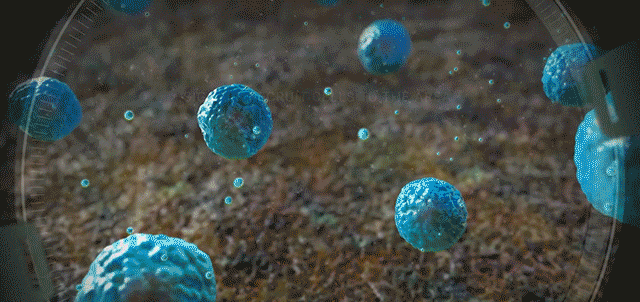
Exosomes: The Latest Breakthrough in Hair Restoration
As hair loss treatments continue to improve with better formulae in prescription medicine and increased precision in surgical procedures such as the AI-driven robotic hair restoration, stem cell therapy continues to be a hot topic in the world of regenerative medicine. More specifically, exosome therapy is being regarded as the latest breakthrough in hair restoration. These aren’t just buzzwords of the medical community, however. Exosome therapy shows strong promise with quantifiable and lasting results in patients suffering from hair loss.
Since such regenerative therapies focus on the human body’s special ability to heal itself, stem cell therapy and exosome therapy are often lumped together. However, this leap in regenerative medicine and hair restoration isn’t quite the same as stem cell therapy. Exosome therapy is highly targeted, far more flexible, and has shown far greater results, with patients seeing faster and more robust hair growth than with other non-surgical regenerative therapies.
So what makes exosome therapy so much better? Here’s a look into exosomes, what makes it distinctly different, and why it offers distinct benefits to our hair loss patients.
What Are Exosomes?
While stem cells are a unique type of cell found in the body from which all other cells with specialized functions are derived, exosomes are membrane-bound extracellular vesicles or small protein particles released from stem cells that give them the faculty to regenerate new tissue. These nano-particles are 1/1000th the size of a stem cell.

Exosome signaling proteins recruit cells for healing through a natural process.
Exosomes provide cellular communications (between cells), carry genetic information, and over 1,000 protein growth factors to cells throughout the body. These proteins stimulate healing, anti-inflammatory responses, and cellular growth. Since they can travel through barriers too large for other cells, exosomes more efficiently disperse healing factors, which, in turn, helps regenerate new tissue, including hair follicles. Exosomes are, essentially, the critical growth factors hair follicles need to produce thick, healthy hair strands.
How Exosomes Are Used to Restore Hair
Exosome therapy for hair loss is an option for both men and women and can be used in the early and/or later stages of hair loss. Exosomes can also be used in combination with platelet-rich plasma (PRP), Low-Level Light therapy, or surgical hair restoration procedures to specifically target areas in need.
Currently, two methods are commonly offered in exosome therapy for hair. The first one involves injecting a serum into the scalp, while the second resembles micro-needling. Research shows both methods are viable. Currently, injections similar to PRP treatment are the most common way to deliver exosomes, although there is evidence that first injecting, followed by micro-needling may be the most effective protocol.
The exosome serum is injected into thinning or affected scalp areas and spaced carefully to maximize the effects. Once effectively in place, the exosomes begin their work repairing, healing, and restoring the damaged hair follicles and skin cells. With the cells supported and stimulated, the hair starts to regrow naturally, giving the patient fuller, thicker hair.
Patients can resume daily activities a day after the treatment, though the scalp may feel a bit sensitive for about a week. Hair growth can start as soon as eight weeks later and continue over a year. Noticeable results typically are seen about six months after treatment. The longevity of the results can vary from person to person.
Components of Exosomes
| NAME | DESCRIPTION | FUNCTION |
| VEGFR | VEGF Receptor | Angiogenesis |
| VEGF | Vascular Endothelial Growth Factor | Angiogenesis & Chemotaxis |
| ANG1 | Angiopoietin 1 | Angiogenesis and Supports VEGF |
| TIMP‑1 | Collagenase Inhibitor | Blocks Matrix Breakdown |
| TIMP‑2 | Collagenase Inhibitor | Blocks Matrix Breakdown |
| IL‑1B | Interleukin 1B | Cell Proliferation, Differentiation, Modulates Inflammation |
| PDGF‑AA | Platelet-Derived Growth Factor | Cell Survival & MSC Proliferation – Mitogenic |
Why Exosome Treatment Works
Exosome therapy may reverse the aging process of hair follicles and has been shown to extend the hair growth cycle. Exosomes stimulate hair follicles that have been frozen in the resting phase into the growth phase. Research has also shown the follicles to sustain the growth phase longer, allowing hair strands to become thicker and healthier.
In most extensive recent studies on androgenic alopecia, researchers determined that exosomes stimulate hair growth much earlier than conventional, non-surgical therapies and without any reported adverse side effects. In just 12 weeks, exosome therapy showed improved hair density and thickness.
Explore Hair Restoration Treatment Options at Barber Surgeons Guild®
Exosome therapy for hair is certainly a promising new treatment option that has significant potential for treating hair loss. However, hair restoration is not a one-size-fits-all solution. Our renowned medical staff will help determine if exosome therapy is the right treatment for your specific condition. Book a consultation to get an in-depth analysis of your condition, as well as a treatment plan.
We offer exosome and PRP therapies, along with the latest, innovative treatments in hair restoration available today at our two Barber Surgeons Guild® locations: the WeHo Outpost in West Hollywood, Los Angeles, and our Soho Outpost in Soho, New York.
